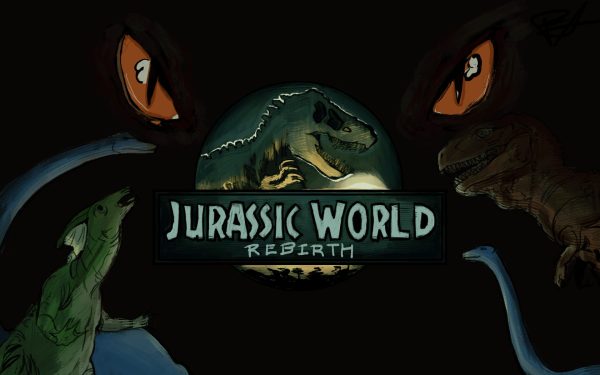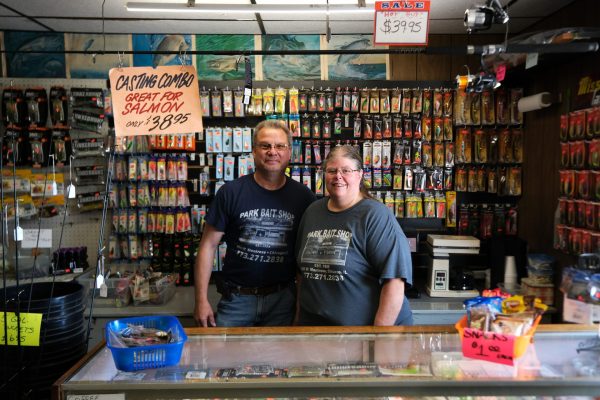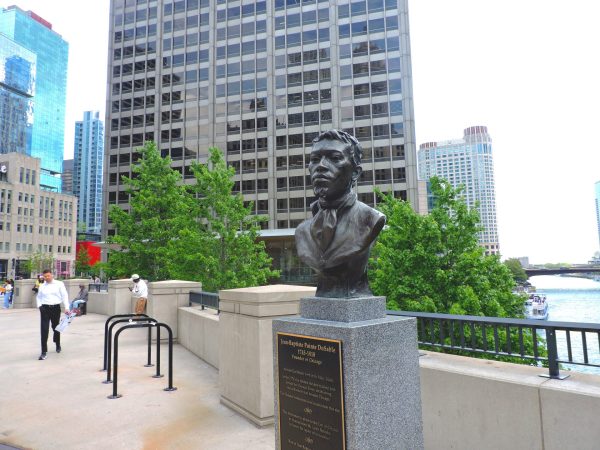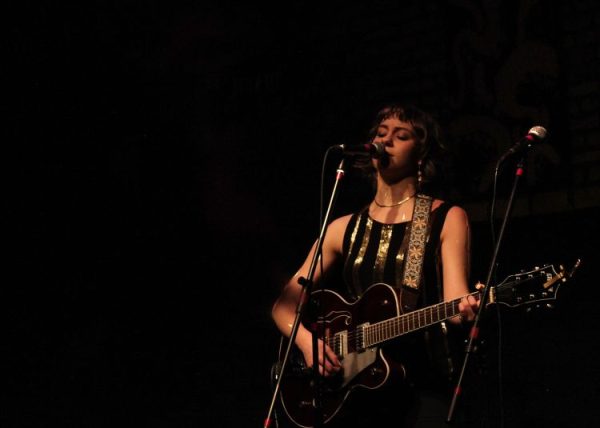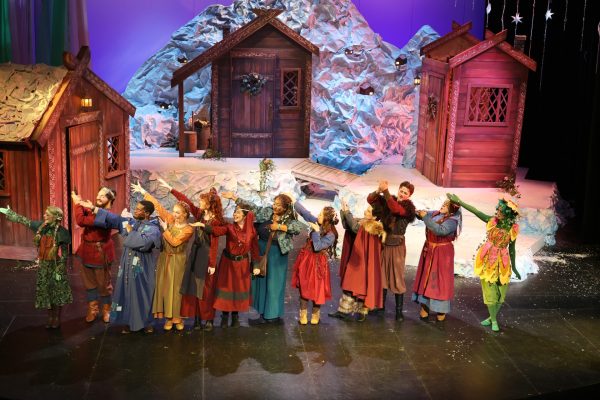Welcome to Chicago, here’s what to know
Credit: Kiersten Riedford
Freshman Jillian Muncaster leans into the Bean sculpture in downtown Chicago to kiss it.
Chicago is a city with deeply rooted traditions. Some are a little odd while others just make sense, like not putting ketchup on your hotdog.
Although Chicago’s traditions can make the transition into the city a little daunting for newcomers, it is important to understand Chicago’s storied traditions and staples for a seamless transition into the Windy City
The first Chicago tradition is probably the most famous, and that’s never putting ketchup on a Chicago hot dog. Former President Barack Obama himself even publicly stated that ketchup does not belong on a hot dog after you’re eight years old.
According to Tastes of Chicago, the perfect Chicago style hot dog consists of steamed poppy seed bun and all-beef hot dog (preferably Vienna), finished off with yellow mustard, green relish, chopped onions, tomato slices, a pickle spear, some sport peppers and celery salt.
Due to the amount of toppings, adding ketchup to this already perfect concoction seems unnecessary and disrespectful to the legendary Chicago hot dog. Now, most Chicago hot dog stands won’t deny you ketchup, but they might give you trouble if you ask for it.
Thirty-Fifth Street Red Hots, located down the street from Guaranteed Rate Field, was the first place in Chicago to feature a “Ketchup Bell of Shame.” Thirty-fifth Street requires you to ring a bell if you want ketchup for anything, in hopes of making those who use the outlawed substance think twice.
Second, if you’re a Chicago native, you will never refer to the Sears Tower as the Willis Tower. In 2009, along with the leasing rights, the naming rights of the Sears Tower were sold to the Willis Group, a London-based insurance brokerage, who decided to change the building’s name.
Over the 1970s and 1980s, the Sears Tower became a staple of Chicago’s identity and culture. Sears was founded and headquartered in Chicago and had firmly entrenched itself in that identity.
This name change to the Willis Tower has gone completely unrecognized by almost, if not all, Chicagoans. Surprisingly, this is just one of many things that Chicagoans refuse to call by their legal name.
One of the big ones is a structure that you most likely all know, “The Bean,” or is that what it’s actually called? The name given to “The Bean” by its artist is actually the “Cloud Gate.” Yes, that shiny bean next to the giant faces that spit water is a cloud.
When the nickname first popped up, Anish Kapoor, the sculptor of “The Bean,” called the name “completely stupid.” But over time, as the name has become more commonplace throughout the city, and country, he has also warmed up to it.
“It’s great for it to have a colloquial name, its own lingo,” Kapoor said. “I call it ‘The Bean,’ too.”
Now, Chicago has an entire naming system of their own for all of their expressways. Instead of the numerical system that the US Department of Transportation assigned to all roadways on the federal interstate highway system, Chicago uses names.
I-290 is the Eisenhower, I-55 is the Stevenson, I-94 is the Edens, I-90 is the Kennedy, the I-90/94 is the Dan Ryan, I-88 is the Reagan, I-294 is the Tri-State and I-94 South is the Bishop Ford. These name differences serve as a key signifier as to whether you are from Chicago or not.
“Telling drivers to take the Outer Drive or the Dan Ryan is still baffling to outsiders,” Chicago native and DePaul history professor Colleen Doody said.
Doody also alludes to another name change with “Inner Drive” and “Outer Drive,” which refers to the colloquial names of Lake Shore Drive’s two different lanes. “Inner Drive” is used for more local traffic and is much smaller in scale than “Outer Drive” is. “Outer Drive” is what most of us think of when we think of Lake Shore Drive, and goes a much longer distance than “Inner Drive” was.
This resistance to name changes, while a key part of Chicago culture, is not unique to Chicago. DePaul Senior and Buffalo native Hallie Long found that Buffalo has a very similar tradition in their city.
“In Buffalo, our arena gets bought by a new company every ten years and it gets changed all the time, and I still call it the name that it was when I was in 3rd grade,” Long said.
Long also describes Chicago as a “bigger Buffalo,” which shows how these parallels can make people like Long feel more at home in the city. These similarities also don’t make Chicago anyless unique, but show the melting pot of culture within the city.
Chicago traditions don’t just entail the way they do things, but also the celebrations that take place here. Chicago native and DePaul Junior Krystal Diaz says that her favorite Chicago traditions are the holiday celebrations.
“Two of my favorite traditions are the Christmas tree lighting and the Saint Patrick’s Day Parade,” Diaz said.
The holiday celebrations have become firmly ingrained in Chicago culture, and the city has found ways to make their celebrations unique. The St. Patrick’s Day parade is one of the city’s biggest events, thanks to the city’s famous river dyeing which turns the Chicago River green.
These traditions and colloquialisms are what give Chicago the flavor that has caused so many to fall in love with the city. While it may look a little scary from the outside, you will rarely find a friendlier and more connected place than Chicago.



